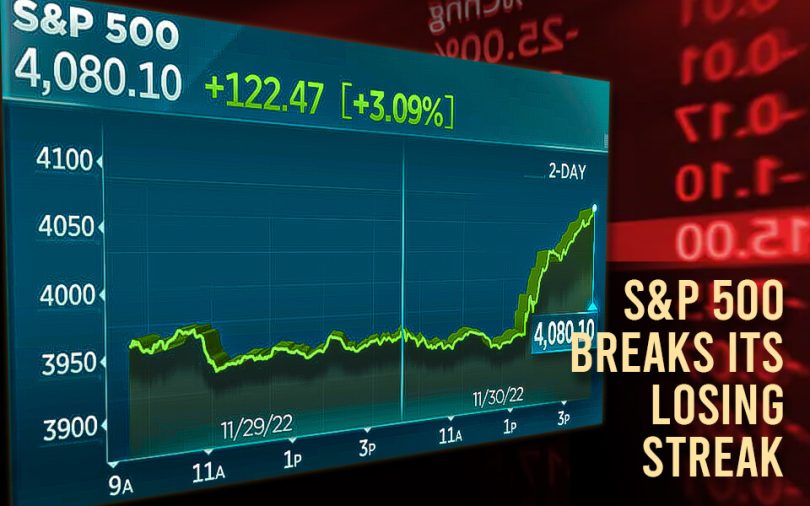Equity benchmarks fluctuated between gains and losses in China, Hong Kong, and Japan. However, Australian equities held onto a solid rally, and European stock futures contracts increased.
After the Bank of Japan(BOJ) startled investors by lifting the ceiling on a benchmark rate and taking a little step away from its ultra-loose monetary policies, U.S. stock indices and bond yields increased.
To reach 3821.62 on Tuesday, the S&P 500 increased 3.96 points or 0.1%.
At 10547.11, the Nasdaq Composite rose by just 1.08 points or less than 0.1%. Gaining 92.20 points, or 0.3%, to 32849.74, the Dow Jones Industrial Average.
On Tuesday, the major indices ended a losing streak of four sessions. Consumer discretionary, consumer staples, healthcare, and real estate traded lower among the S&P 500’s 11 industry groups. The biggest gainers were in the materials and energy sectors.
After experiencing its most significant one-day increase since 1998 on Tuesday, when the Bank of Japan unexpectedly changed its monetary policy, the yen drifted slightly lower. The BOJ’s unexpected decision to raise the prior ceiling on 10-year government bond yields from 0.25% to 0.5% has had a ripple effect that is still being felt.
As the yield on 10-year paper got closer to the new maximum limit on Wednesday, the central bank made an unexpected announcement about a bond-buying operation. As a result, for the only period since 2015, Japan’s two-year government yield increased above zero. After rising by ten basis points for the second consecutive day on Tuesday, Treasury rates also modestly increased in Asia.
According to Amy Xie Patrick, head of fixed income strategy at Pendal Group, the BOJ’s decision signals a change toward Japan normalizing its monetary policy. During a Bloomberg Television interview, she stated, “They’re at the beginning of that journey.” They must follow this course of action to demonstrate to currency speculators that the yen funding trade is not a one-way gamble.
Traders are attentive to the prospect of Japanese associations bringing their investments in foreign equities and bonds home. According to data gathered by Bloomberg, Japanese investors own more than $3 trillion in overseas equities and debt, with around half of that amount located in the U.S.
According to Deutsche Bank AG analysts, the change comes as markets are “already reeling” from last week’s Fed and ECB meetings. “Tighter BOJ policy would close one of the last multinational commentators permitted to keep borrowing prices at low levels more extensively,” they said. After a decade of extraordinary stimulus, many analysts anticipate that the BOJ will increase interest rates in 2019, joining the Fed, the ECB, and other central banks.
In a year marked by rapidly rising interest rates that dragged on stocks and bonds, recent data showing a slowdown in the U.S. housing market has provided some relief for the inflation forecast. 2022 has seen the fifth decline in global equities, putting them on course to record their worst year since 2008. In addition, a Bloomberg index of international bonds has fallen by 16%, the most significant annual decrease since the benchmark started in 1990.
- Published By Team Australia News








